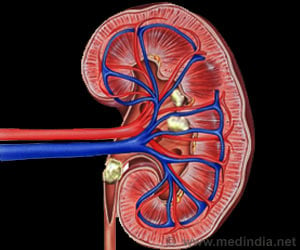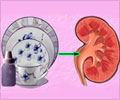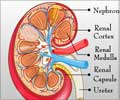The frequency and duration of patient-doctor interactions during dialysis care vary across countries, a new study claims

To get a better understanding of the impact of patient-doctor contact for kidney failure patients, Takehiko Kawaguchi, MD, MPH, PhD (National Hospital Organization Chiba-East Hospital, in Japan) and his colleagues analyzed the associations between a facility's typical frequency and duration of patient-doctor contact with clinical outcomes in 24,498 chronic hemodialysis patients. The study involved information from 1996 to 2008 from 778 dialysis facilities in the international Dialysis Outcomes and Practice Patterns Study.
Among the major findings:
- The frequency of patient-doctor contact was high (more than once per week) for 55% of facilities, intermediate (once per week) for 24% of facilities, and low (less than once per week) for 21% of facilities.
- In Belgium, France, Germany, Spain, and Japan, more than 75% of dialysis facilities had a high frequency of patient-doctor contact. In Australia/New Zealand, Sweden, the United Kingdom, and the United States, less than 30% of facilities had a high frequency of contact.
- In the United States, the percent of facilities with high frequency patient-doctor contact declined from 23% in1996-2001 to 5% in 2005-2008. Use of non-physician practitioners (such as physician assistants and nurse practitioners) may account for some of this decline.
- Compared with patients in facilities having frequent patient-doctor contact, those with intermediate contact had a 6% higher risk of dying during the study, and those with infrequent contact had an 11% higher risk of dying during the study.
- Each 5 minutes shorter duration of contact was linked with a 5% higher risk of dying.
- There were also inverse associations between both the frequency and duration of contact with patients being hospitalized.
"Through this research, we found that more frequent and longer patient-doctor contact in the hemodialysis care setting was inversely associated with mortality and hospitalization. The results suggest that policies supporting more frequent and longer duration of patient-doctor contact may improve patient outcomes in hemodialysis," said Dr. Kawaguchi.
Study co-authors include Angelo Karaboyas, MS Bruce Robinson, MD, FACP, Yun Li, PhD, Shunichi Fukuhara, MD, DMS, Brian Bieber, MS Hugh Rayner MD, FRCP, Vittorio Andreucci, MD, Ronald Pisoni, PhD, Friedrich Port, MD, Hal Morgenstern, PhD, Tadao Akizawa, MD, PhD, and Rajiv Saran, MBBS, MD, MRCP, MS.
Disclosures: The DOPPS is administered by Arbor Research Collaborative for Health and is supported by scientific research grants from Amgen (since 1996), Kyowa Hakko Kirin (since 1999, in Japan), Sanofi Renal (since 2009), AbbVie (since 2009), Baxter (since 2011), Vifor Fresenius Renal Pharma (since 2011), and Fresenius Medical Care (since 2012) without restrictions on publications. Dr. Robinson has received speaker's fees from Kyowa Hakko Kirin. Dr. Pisoni has received speaker's fees from Amgen, Kyowa Hakko Kirin, and Vifor; has served as a consultant for Pursuit Vascular; and has served on an advisory panel for Merck. Dr. Akizawa has received speaker's fees and research grant for Kyowa Hakko Kirin. The corresponding author and all other authors have no potential conflicts of interest to declare.
Advertisement
The content of this article does not reflect the views or opinions of The American Society of Nephrology (ASN). Responsibility for the information and views expressed therein lies entirely with the author(s). ASN does not offer medical advice. All content in ASN publications is for informational purposes only, and is not intended to cover all possible uses, directions, precautions, drug interactions, or adverse effects. This content should not be used during a medical emergency or for the diagnosis or treatment of any medical condition. Please consult your doctor or other qualified health care provider if you have any questions about a medical condition, or before taking any drug, changing your diet or commencing or discontinuing any course of treatment. Do not ignore or delay obtaining professional medical advice because of information accessed through ASN. Call 911 or your doctor for all medical emergencies.
Advertisement
Source-Newswise











